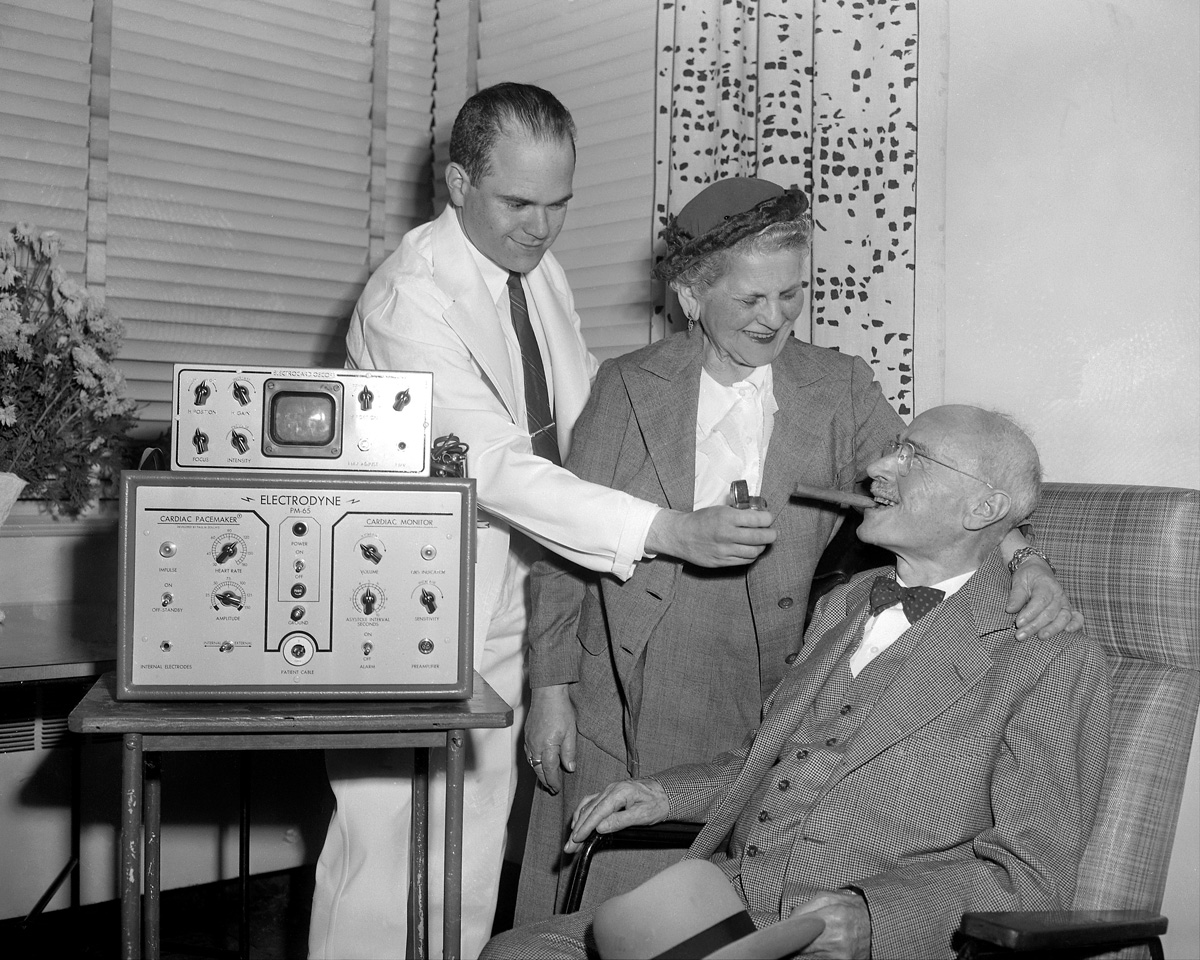

Cardiac pacing once required cutting open the chest to reach the heart. Sixty years ago, on August 18, 1958, Montefiore surgical resident Seymour Furman performed a radically less invasive procedure on 76-year-old Pincus Shapiro, admitted to Montefiore two months earlier with congestive heart failure. In a technique he’d practiced on dogs, Dr. Furman inserted an electrode-tipped catheter into Mr. Shapiro’s left arm and threaded it through the median basilic vein into the right ventricle. The Electrodyne pacemaker at the catheter’s other end delivered small jolts of electricity to maintain a regular heartbeat, making Mr. Shapiro the world’s first transvenous-pacemaker patient. Three months later, his heart had recovered sufficiently for doctors to remove the catheter—and for Mr. Shapiro to return home, with reporters and photographers on hand. “Electrode in Heart Saves Man’s Life,” read the New York Times headline, and the Daily News ran this page-one photo of Dr. Furman lighting a cigar for Mr. Shapiro as his wife Estelle looked on. Mr. Shapiro lived another four years. Dr. Furman became a renowned expert on pacemakers, his groundbreaking procedure leading to today’s miniaturized devices. He worked for more than 50 years at Montefiore and Einstein, where he became a distinguished professor of cardiothoracic surgery and of medicine. Dr. Furman died in 2006 at age 74, from complications of cardiovascular disease.